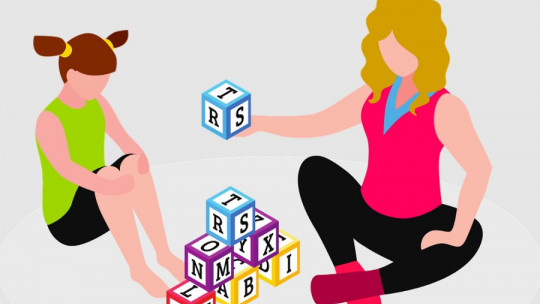Psychological treatments, as is evident, depend largely on the population they are focused on.
Therefore, there are many possibilities when it comes to therapy. In this case we are going to focus on treatments focused on the child and adolescent population, more specifically those of adolescent age, whose behavior is marked by disobedience
Possible psychological disorders associated with disobedience
The work of psychologists must constantly adapt to the type of patient to whom they must help. Therefore, when we ask ourselves what psychotherapy is like for disobedient adolescents, we have to take into account the characteristics of this group, since they are what will determine the way we do therapy.
Adolescence is often a turbulent time in people’s lives Therefore, it is not surprising that many of them, at this stage, begin to manifest some behavioral alterations, which frequently translate into disobedience to authority, represented mainly by their own parents.
One of the psychopathologies that can generate is oppositional defiant disorder , characterized, effectively, by a negative attitude, defiance and disobedience towards parents, teachers and any other person who may represent authority for them. In data from past years, such as 2016, the prevalence of this pathology was between 3% and 8% of Spanish adolescents.
Before answering what psychotherapy is like for disobedient adolescents, we must know these and other data, which are of great relevance to the topic at hand. Returning to oppositional defiant disorder, this pathology is especially common in males, with two to three times more cases found than in female adolescents.
But it is not the only psychopathology that can negatively influence the behavior of young people. Another example is that of conduct disorder , which also affects some adolescents. In this case, individuals who suffer from it constantly transgress every rule, so it is evident that their attitude towards authority is one of absolute disobedience.
Conduct disorder is another one that we must take into account when we consider what psychotherapy is like for disobedient adolescents. For this disorder, we found that the prevalence is also higher in men than in women. In the total adolescent population, it is estimated that between 1.5% and 3.4% of individuals suffer from this disease.
Nor should we forget about attention deficit hyperactivity disorder , since, even if for other reasons, it also causes the adolescent to not obey authority on many occasions. As in the other examples we have seen, this pathology is more common in men. Regarding the total, studies conclude that there would be from 3% to 7% of adolescents affected by ADHD.
The keys to psychotherapy for disobedient adolescents
After a first introduction that has allowed us to approach the problem at hand, knowing some of the disorders that trigger this type of behavior, we are now going to delve deeper into the question of what psychotherapy is like for disobedient adolescents.
To do this, we are going to review what would be the keys to this matter.
1. The diagnosis
In order to carry out psychological therapy according to the needs of the minor, The psychologist will have to carry out an evaluation that allows him to issue a clinical diagnosis In it you can indicate the type of disorder, if any, that the adolescent is suffering from. It could be one of those that we have seen in the previous point or another that was also influencing her behavior.
Likewise, you must estimate the influence of external factors that could be aggravating said problem. One of the common ones is the consumption of substances such as alcohol, tobacco or other drugs. The effects caused by some of these substances, as well as their abstinence, when there is a certain dependence, could increase antisocial behaviors, such as disobedience.
The sooner a good diagnosis is made, the sooner the mental health professional can draw up an action plan to improve the adolescent’s behavior and therefore, your quality of life and that of the people around you.
2. Treatment
The next phase will be the treatment itself. We are, therefore, at the heart of the answer to what psychotherapy is like for disobedient adolescents. Obviously, it is not a simple or unique answer, since it will essentially depend on the diagnosis that has been previously issued.
In that sense, we can already intuit that There is no single way of proceeding to tackle the problem of disobedience Even when faced with the same diagnosis, two professionals, especially if they belong to different psychological trends, will be able to adopt very different ways of acting, and both can be successful in achieving the objective.
What this means is that, when we talk about what psychotherapy is like for disobedient adolescents, we must be aware that the answer will depend on the patient himself, his individual conditions, the psychologist in charge of helping him heal, and the techniques chosen by the patient. same.
Therefore, there are multiple possible answers that we can give to this question, because, although there will be cases with similar characteristics, the truth is that each of them will have a treatment totally conditioned to the patient to the therapist and to their respective particular contexts.
3. Parents
An element that should never be forgotten when dealing with the question of what psychotherapy is like for disobedient adolescents is that of the figure of the parents. Parents are generally the usual authority figure for adolescents. Therefore, if they are displaying disobedient behavior, it is most likely that parents will be affected by this issue.
Therefore, and in order to achieve the most effective therapy, The psychologist must work, not only with the adolescent, but also with his father and mother, or the people who are his legal guardians On many occasions, acts of disobedience are generated and/or maintained by an imbalance in the relationship between the patient and his or her parents.
That is why it becomes essential analyze this relationship to study the points where friction is being generated and be able to propose solutions in this regard Although it always depends on the diagnosis and the treatment chosen, as we have already seen, we are going to describe one of the possible techniques that can be proposed so that both work together.
4. Techniques
This is the token economy. Although this is a technique used more frequently in the child population, if appropriately adapted it can also be useful with adolescents. This is an appropriate technique to achieve behavior modifications through operant conditioning, so it can serve as an example of what psychotherapy is like for disobedient adolescents.
The first thing parents should do is identify all the elements that the adolescent enjoys, which are provided by themselves The most frequent are the use of the telephone or computer, the Internet connection, payment, video games, etc. Until now, the minor had enjoyed all of them in a more or less free way.
By introducing the token economy, this situation changes. What is done is to put a price on each of these activities or elements, but not in money, but in tokens, which will be a symbolic currency that the adolescent can obtain in exchange for carrying out said tasks, which he previously refused and therefore he showed disobedience.
The objective is obvious: motivate the minor to obey and comply with the designated activities, since he will perceive that by doing so he will be able to obtain the tokens that will allow him to “buy” his privileges , which you previously took for granted but which now cost you. The point is that this cost ends up being reduced, precisely, to the obedience that was not shown before.
In this way, and under the criteria of operant conditioning, light can be shed on the question of what psychotherapy is like for disobedient adolescents, with a technique as well-known and effective as the token economy. It is important to repeat that this is just an example of a tool.
The choice of these and of the therapy in general, as we have already said, is a matter that will depend entirely on the professional in question and their criteria, after observing the characteristics of the patient and their environment.









